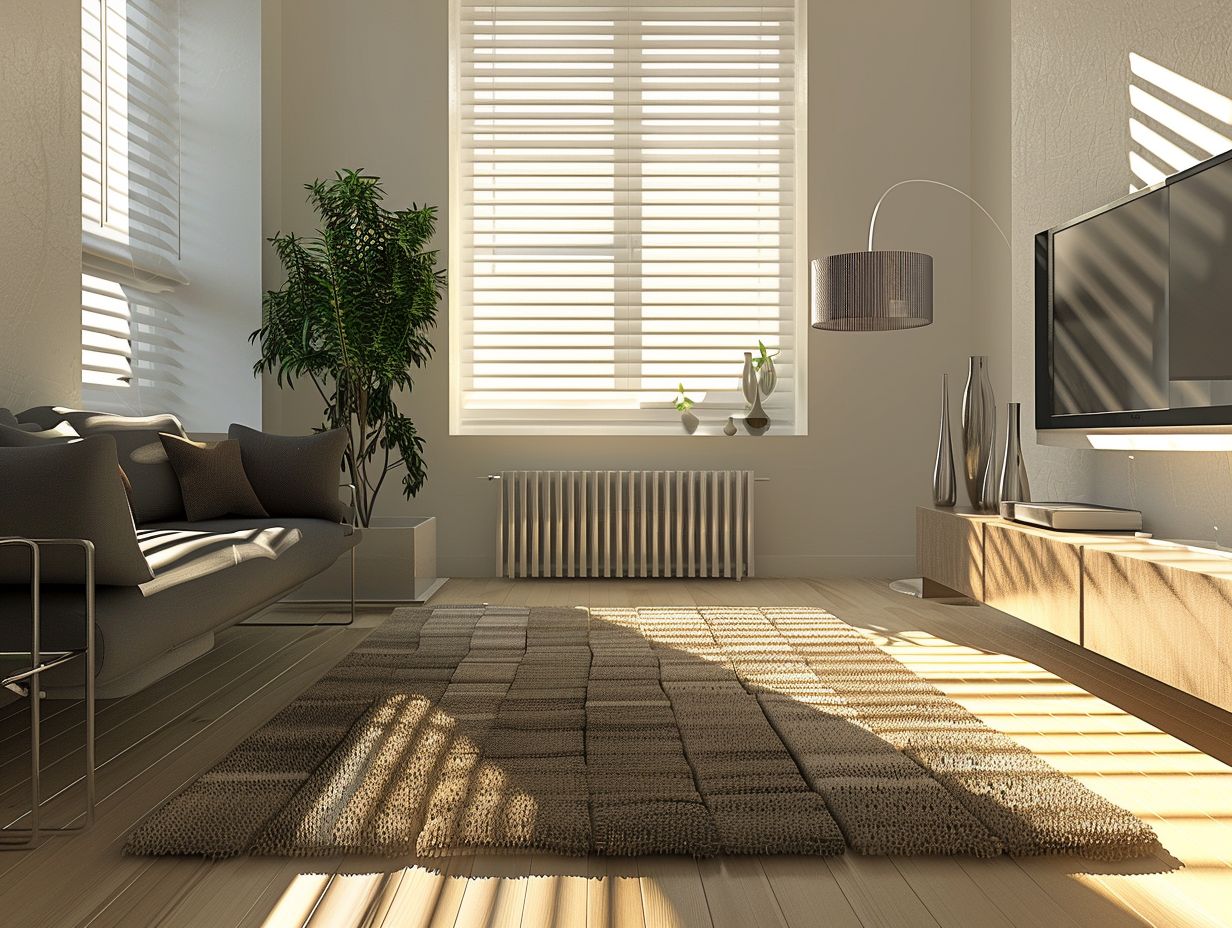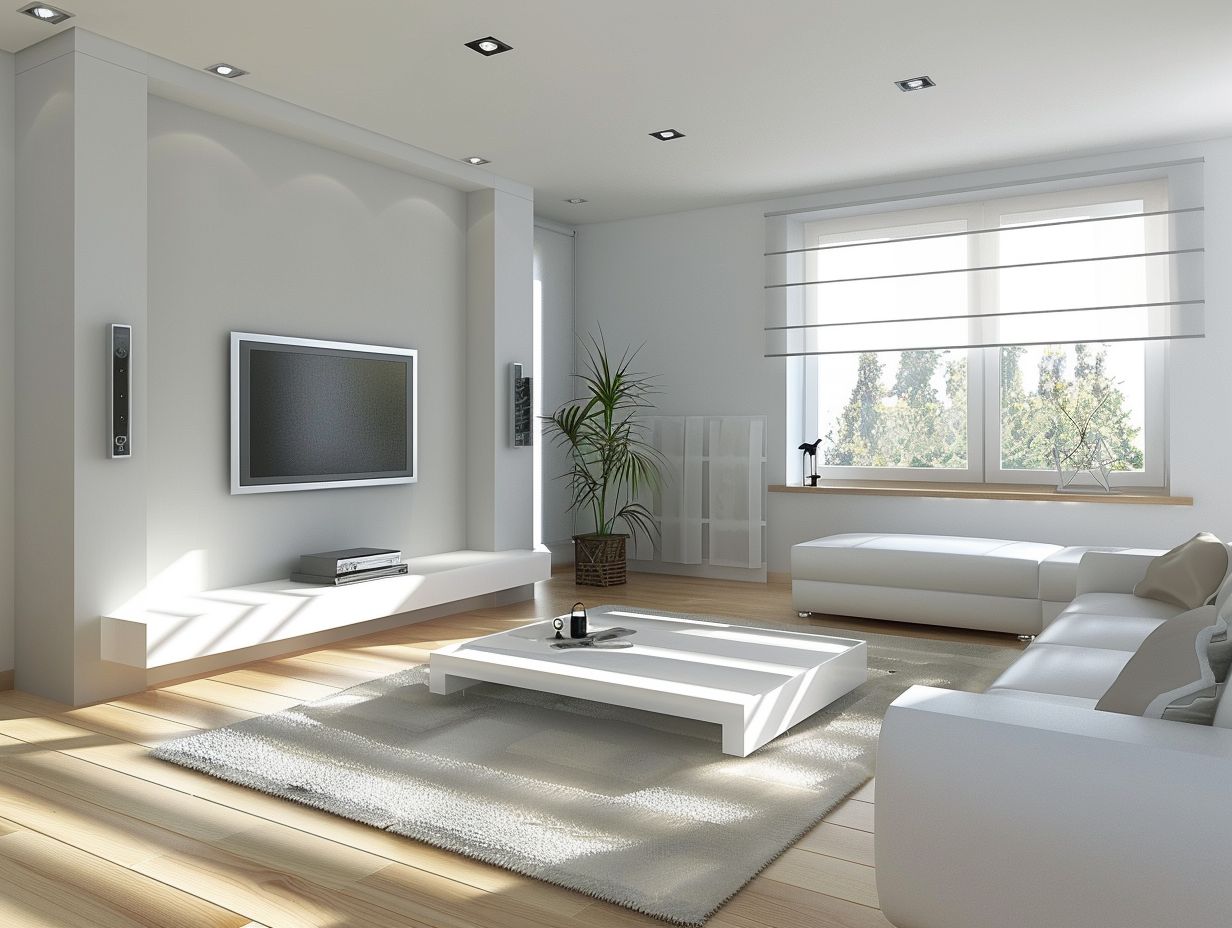Electric living room radiators offer a cost-effective and efficient heating solution for your home. Various types of electric radiators will be examined, along with an explanation of how they operate.
Factors influencing the operational costs of these radiators, including size, model, and usage patterns, will also be addressed. Gain insights on calculating the operational expenses of your electric radiator and discover strategies to minimise costs through efficiency practices and alternative heating solutions.
Keep reading to delve deeper into the realm of electric living room radiators!
Key Takeaways:

- Electric living room radiators come in different types and work by converting electricity into heat.
- The cost of running an electric living room radiator is influenced by its size, model, and usage habits.
- To calculate the cost of running, consider the wattage and electricity rates, and explore efficiency tips or alternative heating options to reduce cost.
Understanding Electric Living Room Radiators
Electric living room radiators, such as the ELKAtherm models, are a popular choice in the UK for providing efficient heating while also being eco-friendly. They offer a cost-effective solution for maintaining warmth in a room while helping to reduce energy bills and lessen the environmental impact.
ELKAtherm models stand out for their advanced technology that allows for precise temperature control, ensuring optimal comfort without unnecessary energy wastage. These radiators are designed to heat rooms quickly and evenly, eliminating cold spots and creating a cosy atmosphere.
By using ELKAtherm radiators, homeowners can customise heating schedules to match their daily routines, resulting in significant energy savings and reduced electricity costs in the long run. Their sleek and modern design adds a touch of sophistication to any living space, blending seamlessly with various interior styles.
How They Work?
Electric radiators like ELKAtherm operate by converting electricity into heat, which is then emitted to regulate your room’s temperature. Equipped with thermostats, they provide precise control over heating levels, and their efficiency is bolstered by proper room insulation.
The process of ELKAtherm electric radiators involves a heating element that warms up as electricity flows through it. This warmth is then transferred to the surface of the radiator, heating the air that passes through it. The radiator’s thermostat senses the room temperature and adjusts the heating output accordingly, ensuring a comfortable environment while minimising energy wastage.
Effective room insulation is crucial for retaining the generated heat, reducing the radiator’s workload, and enhancing overall energy efficiency. This highlights the importance of optimal room insulation in maximising the performance of electric heaters.
Factors Affecting Cost of Running
When considering the cost of running electric radiators, there are several factors that come into play. These factors include the size and model of the radiator chosen, electricity prices in your area, and the overall efficiency of your heating system.
Ensuring proper room insulation and opting for energy-efficient models, such as ELKAtherm, can help in reducing running costs while also addressing concerns related to climate change.
The level of room insulation is critical in containing the heat produced by electric radiators within the room, which in turn minimises energy loss and maximises performance.
Selecting energy-efficient models, particularly those with programmable thermostats or smart controls, can further improve cost-effectiveness. These features allow users to adjust heating settings based on their specific requirements and schedules, thereby preventing unnecessary energy usage.
By taking these factors into account, individuals can not only save on heating expenses but also play a part in creating a more sustainable and environmentally friendly living environment.
Size and Model

When considering electric radiators, the size and model are key factors in determining costs. Opting for the right size and model, such as ELKAtherm, based on the dimensions of the room and its heating requirements, can lead to effective heating solutions that are in line with climate change objectives.
Your choice of electric radiators, like ELKAtherm, in terms of size and model, can significantly impact the efficiency of heating in a given space. Selecting radiators that are too small may result in inadequate heating, while oversized models could lead to unnecessary energy consumption and increased expenses.
Professional installation of electric radiators is crucial to ensure optimal performance and energy efficiency. Regular maintenance, which includes cleaning and inspecting for any technical issues, is vital for maximising the longevity and effectiveness of electric heating systems.
Usage Habits
You can achieve significant reductions in the operating costs of electric radiators by adopting effective usage habits. This includes setting the thermostat at optimal temperatures, exercising control over energy usage, and implementing practical tips such as room insulation.
By efficiently managing your usage habits, you can increase the efficiency of your heaters while decreasing energy consumption.
To optimise energy usage further, consider adjusting the thermostat to lower temperatures when you are away or sleeping, and make use of programmable settings for heat control. These actions can result in substantial savings on your energy bills.
Additionally, proper room insulation techniques, like sealing drafts and using thermal curtains, can help keep heat within the space, reducing the need for constant heating.
Regular maintenance is essential for preserving the effectiveness and longevity of your heaters. This includes tasks such as cleaning the radiator surfaces and ensuring good airflow. By prioritising these maintenance practices, you can contribute to cost-effective heating solutions in the long run.
Calculating Cost of Running
Calculating the cost of running electric radiators involves considering factors such as wattage, energy consumption, and prevailing electricity rates. Efficient models like ELKAtherm can help you optimise energy usage and reduce overall costs while maintaining heating efficiency.
Wattage plays a crucial role in determining how much electricity a radiator consumes, as higher wattage models tend to use more energy. By understanding the wattage of your electric radiator and how it corresponds to energy consumption, you can make informed decisions on managing your heating expenses.
The prevailing electricity rates in your area heavily influence the running costs of electric radiators. Choosing an efficient model like ELKAtherm can lead to significant savings over time, as these models are designed to provide optimal heating performance while consuming minimal electricity.
Wattage and Energy Consumption
Understanding the wattage and energy consumption of electric radiators, such as models from ELKAtherm, directly impacts the efficiency and running costs. By managing the wattage output of electric radiators like ELKAtherm models, users can ensure they are consuming the right amount of energy for their heating needs.
ELKAtherm radiators offer advanced technology for precise control of wattage levels, resulting in efficient heating without energy wastage. This attention to wattage not only enhances comfort but also significantly reduces energy bills by preventing unnecessary energy expenditure.
Optimising wattage and energy consumption is crucial in the UK context, where energy costs can make up a significant portion of household expenses.
Electricity Rates
Electricity rates play a crucial role in determining the overall costs of operating electric radiators, particularly models such as ELKAtherm. Understanding and monitoring electricity rates can assist you in making informed decisions to effectively manage energy expenses while ensuring efficient heating solutions.
For individuals relying on electric radiators like ELKAtherm, having knowledge of peak and off-peak tariff rates can lead to significant savings. By scheduling heating to coincide with off-peak hours, you can capitalise on lower rates while still maintaining a comfortable indoor temperature.
Exploring alternatives like smart meters and time-of-use tariffs can offer greater flexibility and control over energy consumption. This allows you to adjust your heating usage to align with more affordable rates and optimise the efficiency of your heating systems.
Ways to Reduce Cost

To reduce the cost of operating electric radiators, you should consider implementing efficiency tips, exploring alternative heating options, optimising room insulation, and managing energy usage effectively.
By adjusting thermostat settings, considering energy-efficient models, and exploring eco-friendly heating alternatives, you can achieve significant cost savings.
For optimal energy usage, it is essential to set the thermostat at an appropriate temperature, typically between 18-21 degrees Celsius. This simple adjustment can help prevent unnecessary energy consumption while still maintaining a comfortable indoor environment.
When choosing electric radiators, look for models with high energy-efficiency ratings, such as those equipped with programmable timers and temperature controls. Investing in proper room insulation can further improve the effectiveness of electric heating systems by reducing heat loss and overall energy expenditure.
Efficiency Tips
Efficiency tips for electric radiators focus on maximising energy-saving practices, enhancing environmental considerations, and improving overall heater efficiency.
By following these tips, you can create a cost-effective heating environment that aligns with your energy-saving goals and promotes a sustainable approach to heating solutions.
One key tip is to set the thermostat to an optimal temperature, typically between 18-21 degrees Celsius, to balance comfort and energy efficiency. Regular maintenance, such as cleaning the radiators and ensuring proper insulation, can significantly improve heat distribution and reduce energy consumption.
Utilising programmable timers to heat rooms only when needed, investing in energy-efficient models, and sealing drafts around windows and doors are effective ways to enhance the performance of electric radiators while minimising energy wastage. Embracing these practices leads to a greener and more sustainable heating strategy.
Alternative Heating Options
When exploring alternative heating options beyond electric radiators, you should consider energy-efficient systems, renewable energy sources, and strategies for mitigating climate change. By assessing various heating choices, you can address your specific needs and contribute to a sustainable heating environment.
Opting for renewable energy sources like solar panels or ground-source heat pumps allows you to significantly reduce your carbon footprint while ensuring efficient heating. These solutions not only provide long-term cost savings but also play a critical role in promoting sustainable practices.
Heat recovery ventilation systems can enhance energy efficiency by recycling heat, further reducing environmental impact. It is crucial to consult with professional installers when implementing these heating alternatives to ensure proper setup and maintenance for optimal performance and longevity.
Frequently Asked Questions
How much does it cost to run an electric living room radiator per hour?
The cost of running an electric living room radiator can vary depending on a few factors such as the size of the radiator, the wattage, and the electricity rates in your area. On average, it can cost between $0.50 to $1.50 per hour to run an electric living room radiator.
How does the size of an electric living room radiator affect its running cost?

The size of an electric living room radiator determines its heating capacity and therefore, its running cost. Larger radiators with higher wattage will generally cost more to run compared to smaller ones. However, a larger radiator can also heat up a room faster, potentially reducing the overall running time and cost.
Are there any additional costs associated with running an electric living room radiator?
Aside from the electricity cost, there may be additional costs associated with running an electric living room radiator. These can include installation costs, maintenance fees, and the cost of any repairs or replacements that may be needed over time. It’s important to consider these potential costs when budgeting for an electric radiator.
How can I reduce the running cost of my electric living room radiator?
There are a few ways to reduce the running cost of an electric living room radiator. One way is to properly insulate your home, as this can help retain heat and reduce the amount of time your radiator needs to run. Another way is to use a programmable thermostat to control the temperature and only heat the room when needed.
Do different electricity rates affect the running cost of an electric living room radiator?
Yes, the electricity rates in your area can affect the running cost of an electric living room radiator. Areas with higher electricity rates will generally have higher running costs for electric radiators. It’s important to research and compare electricity rates when considering the overall cost of running an electric radiator.
What is the average lifespan of an electric living room radiator?
The average lifespan of an electric living room radiator can vary depending on the quality, brand, and usage. On average, they can last between 10-25 years. Proper maintenance and regular cleaning can help extend the lifespan of your electric radiator.

